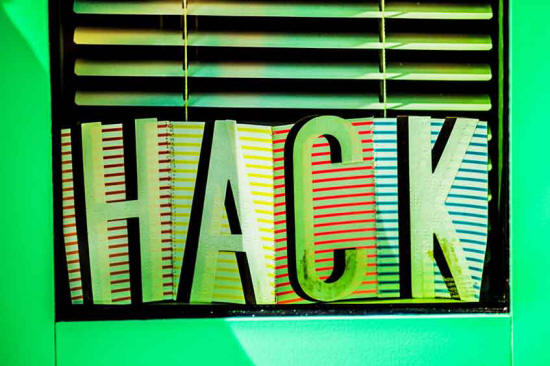|
from Medium Website
Photo: Erik Jacobs on Flickr
but it's also confusing.
So start here...
At the moment, the data that rules our lives is - for the most part - kept in big lumps in one place, whether on a private server, in the cloud, or on paper in libraries or archives.
That's fine for a lot of things, but it can also be vulnerable to attack.
It was recently revealed that hackers breached Uber last year and stole the personal information of 57 million users.
You probably heard about the hack - and subsequent publication online - of data on up to 37 million users of the extramarital dating site Ashley Madison the same year.
Or the more recent breach at the U.S. credit rating company Equifax, which saw the personal data of 143 million U.S. consumers, including Social Security numbers and, in some cases, driver's license numbers and even credit card details, stolen.
Photo: Thomas Hawk on Flickr
These breaches can have serious consequences, leaving millions of people vulnerable to identity theft and fraud.
The personal nature of the Ashley Madison data compounded the problem, contributing to at least two suicides.
Blockchain would have stopped that?
Not necessarily...
Blockchain can't stop hackers getting into your computer system if your admin password is "password."
But other times, hackers use brute force - sheer computing power - to attack a system; blockchain makes that nearly impossible.
Blockchain technology breaks the database into a million tiny pieces, which are then spread across thousands of computers.
And that's the "distributed" part of it?
Exactly...
Each part of the structure - whether it's a unit of currency like bitcoin, or the navigation system of a self-driving car, say, or your health or voting records - is spread across the network in a web of interwoven chains of data.
The system gets exponentially more secure the more complex it gets.
That's clever...
That's just the start. It also self-checks and self-repairs. The computers participating in the blockchain help maintain its integrity by checking and verifying sets of transactions - blocks - which then form a chain with the history of each piece of data encoded on it.
Because the blockchain is constantly checking itself, the data on it is immutable. Even if a hacker did somehow manage to break into a block, any changes they made would be immediately and permanently visible.
To get participants to volunteer processing power, different systems based on blockchain, including bitcoin, offer incentives in the form of tokens.
That's what bitcoin is:
That process is called "mining," and the idea was laid out by Satoshi Nakamoto, bitcoin's inventor, in this famous white paper.
Nakamoto saw that with the right incentives, a network,
Today, the computers mining bitcoin's blockchain run almost 5 quintillion encryption procedures - called "hashes" - per second.
That sounds like a lot
It really is...
There has never been a supercomputer built on Earth that could do anything even close to 4 quintillion hash operations per second. It's more powerful than the world's top 500 supercomputers combined.
This also uses an astonishing amount of electricity - bitcoin mining now uses more electricity than the nation of Ireland.
A direct comparison is difficult, mind you. Supercomputer power, measured in floating operations per second (FLOPS), is not directly comparable to hashes per second.
It's like the difference between torque and horsepower - a tractor may be more powerful than a Ferrari, but it won't go as fast. Bitcoin isn't beating Deep Blue at chess anytime soon; it's just not geared for that.
But there has certainly never been anything like it before.
This Satoshi sounds like a smart dude - Who is he?
We don't know. Satoshi's identity has always been a secret.
People have claimed to be him over the years, but none of them really checked out, and it has been speculated that he may have in fact been a group of people.
Those thought to be the most likely candidates have strenuously denied it, and there is now such a mythos around him (or her, or them) that it's probably better not to know.
What we do know is that Satoshi emerged out of a movement known as the cypherpunks, a community of cryptographers, programmers, and sundry thinkers who, toward the end of the 20th century, began to wonder if there was a better way to approach privacy, information, and power.
Among their number were:
BitTorrent? The thing my cousin uses to download bootleg ‘Game of Thrones' episodes?
That's the one.
Cohen's insight was that rather than sharing whole files, if you broke them up into small chunks, then people could download them piecemeal from each other as well as from the source.
In that sense, BitTorrent shares some spiritual DNA with blockchain.
These guys sound like anarchists. Anarchists and libertarians, mostly.
Blockchain isn't seductive just because it's secure:
Photo: Rex Roof on Flickr
To the cypherpunks, according to Steve Bellovin, professor of computer science at Columbia University in New York, this was "a perfect solution."
Cryptocurrencies had been around, in one form or another, since the '80s, but they were centrally created or managed.
Satoshi's insight, elegant and simple, was to decentralize the whole thing.
It spoke to,
I bet the big banks don't like that
Some of them are worried.
Jamie Dimon, CEO of J.P. Morgan, has been an outspoken critic of bitcoin in particular.
Some say the price growth of bitcoin is a bubble that will inevitably burst sooner or later. But there is a lot of hype around blockchain right now, and banks are not immune to enthusiasm.
Initial coin offerings (ICOs), in which new cryptocurrencies are launched, have proliferated madly.
Jamie Dimon, CEO of J.P. Morgan and bitcoin critic. Photo: Jesse Baca on Flickr
Not all of them are legit.
In November, the SEC filed fraud charges against the organizers of one ICO, PlexCoin.
Just two days later, members of a cryptocurrency mining marketplace called NiceHash found that hackers had breached the site and made off with more than $60 million in bitcoin.
Blockchain, like any technology, is only as secure as its users.
But hang on, can't they just check the ledger and find the hackers?
Yes, actually, in theory they can.
While bitcoin in its early days had a reputation for being a tool for criminal activity like drugs or money laundering, that was based on a fundamental misunderstanding of what it does and doesn't anonymize.
If you have the resources - and the ability to subpoena cryptocurrency exchanges to find out what addresses pertain to which users - you can follow the path of a bitcoin much more accurately than you can a paper dollar.
To be clear:
I wasn't going to.
Good...
Anyway, despite those hiccups, blockchain went mainstream in 2017, as the value of bitcoin and Ethereum rocketed up tenfold in the space of a year.
Ethereum? What's that?
Ethereum is the second-largest blockchain.
It's much smaller than bitcoin - its cryptocurrency token, ether, has a market cap of $42 billion, compared to bitcoin's quarter of a trillion dollars - but Ethereum can integrate smart contracts onto its blockchain.
Ethereum isn't meant to be just a cryptocurrency like bitcoin, according to Joe Lubin, but a full enterprise platform onto which programmers can build applications for any number of things.
Despite that, one ether went from being worth $8 in January to being worth $434 in December as investors began to sense the enormous sums of money to be made.
So where are we going from here?
Blockchain is going to become more and more normalized as the gold standard - for security, at least.
As a base for currency, it will face some challenges, but most large banks now have departments specializing in cryptocurrencies, and some are considering building their own private blockchains.
Some countries and others, are too.
There's a long way to go yet.
Tim Draper, a venture capitalist and bitcoin investor, reckons that eventually,
That could be a long way off.
Bitcoin's price could continue to rise - or it could crash tomorrow and send the market tumbling, forcing regulators to react.
Blockchain is the future - but getting there may be a bumpy ride...
|





